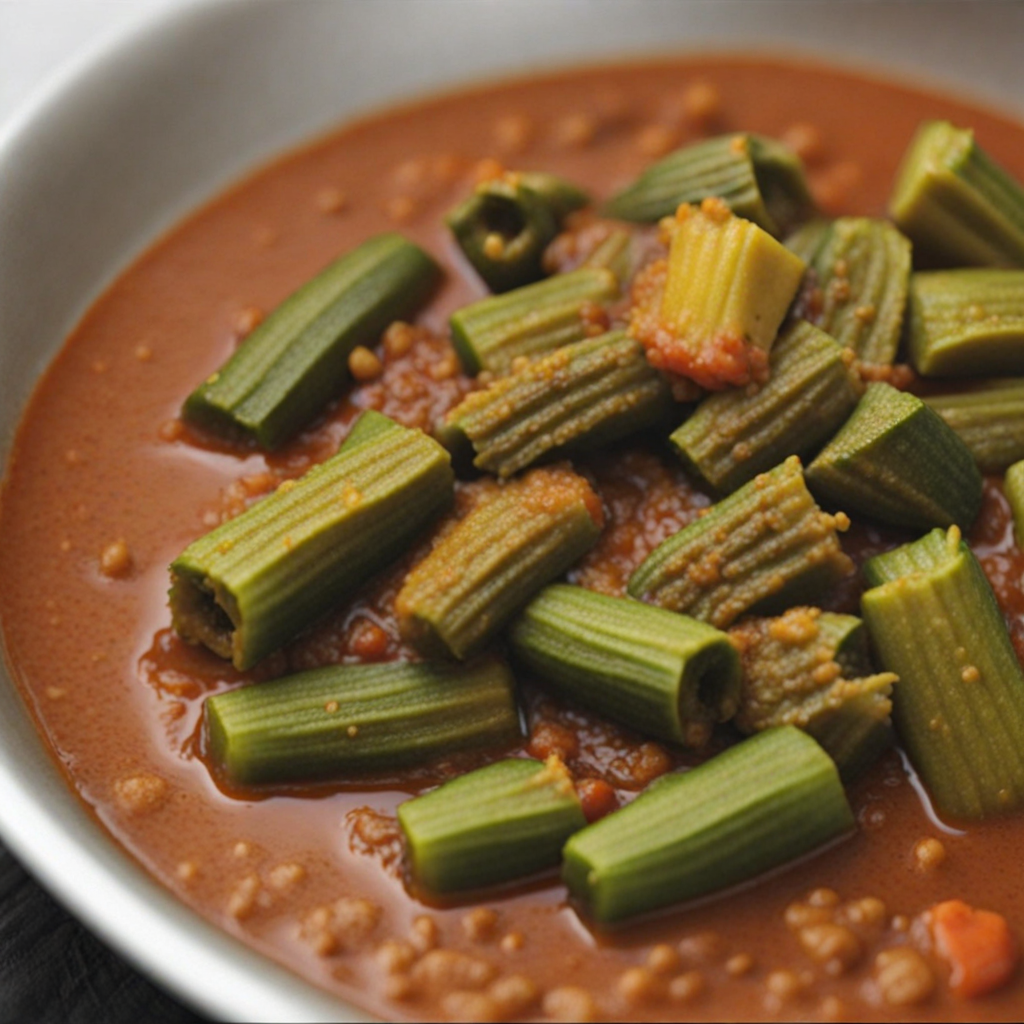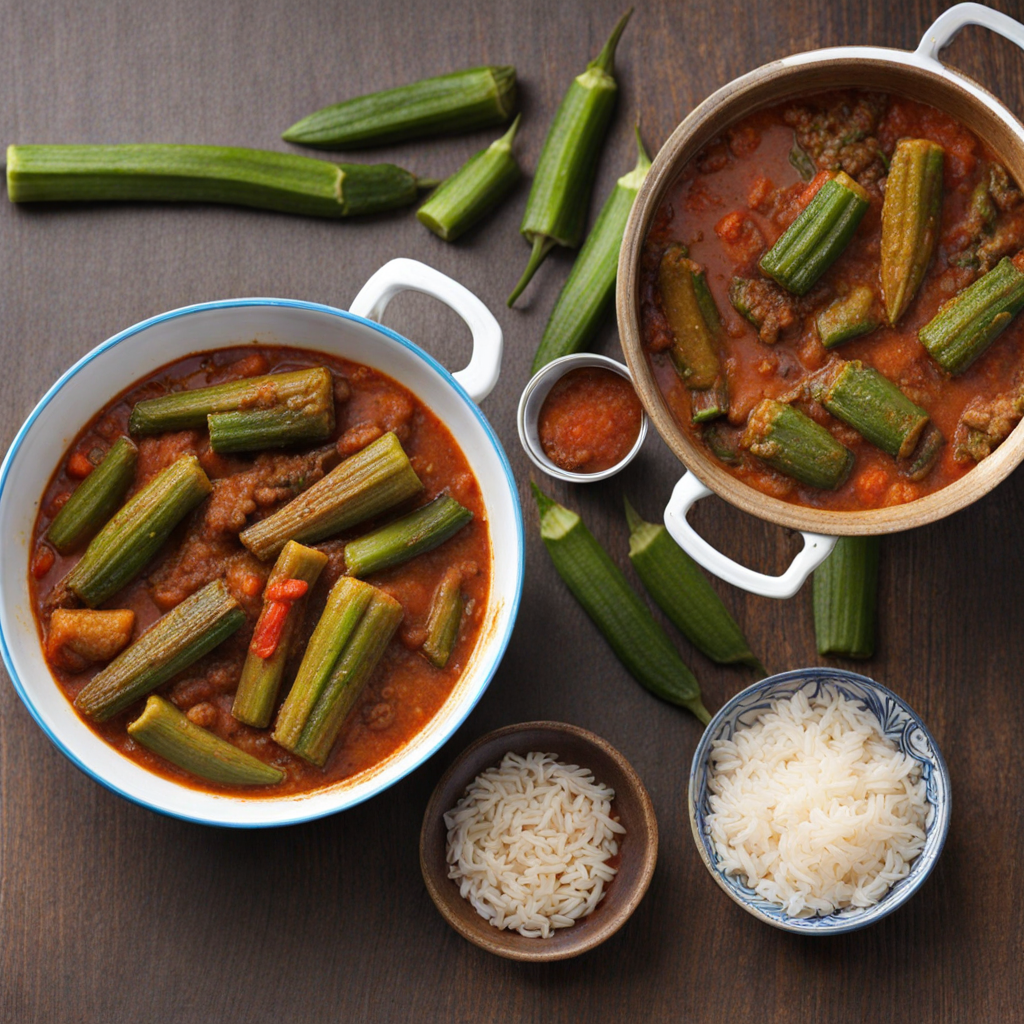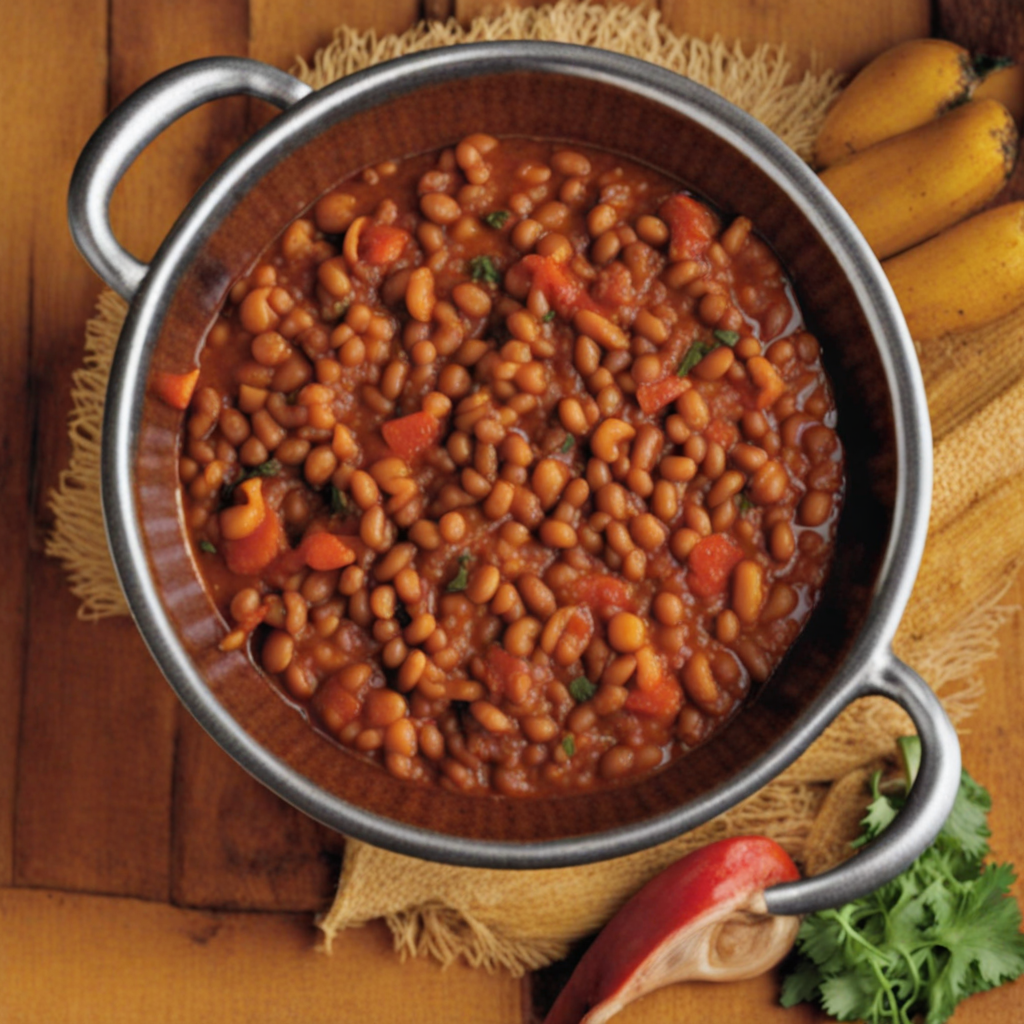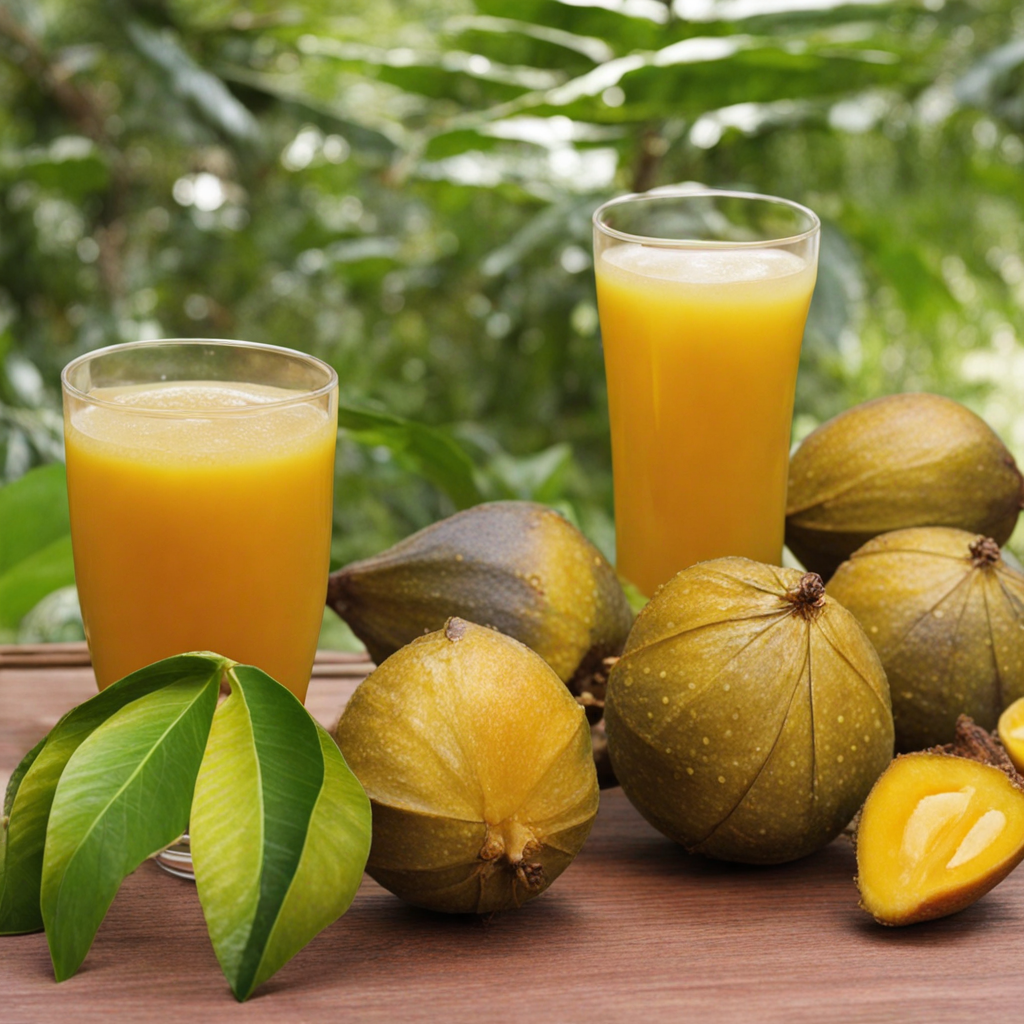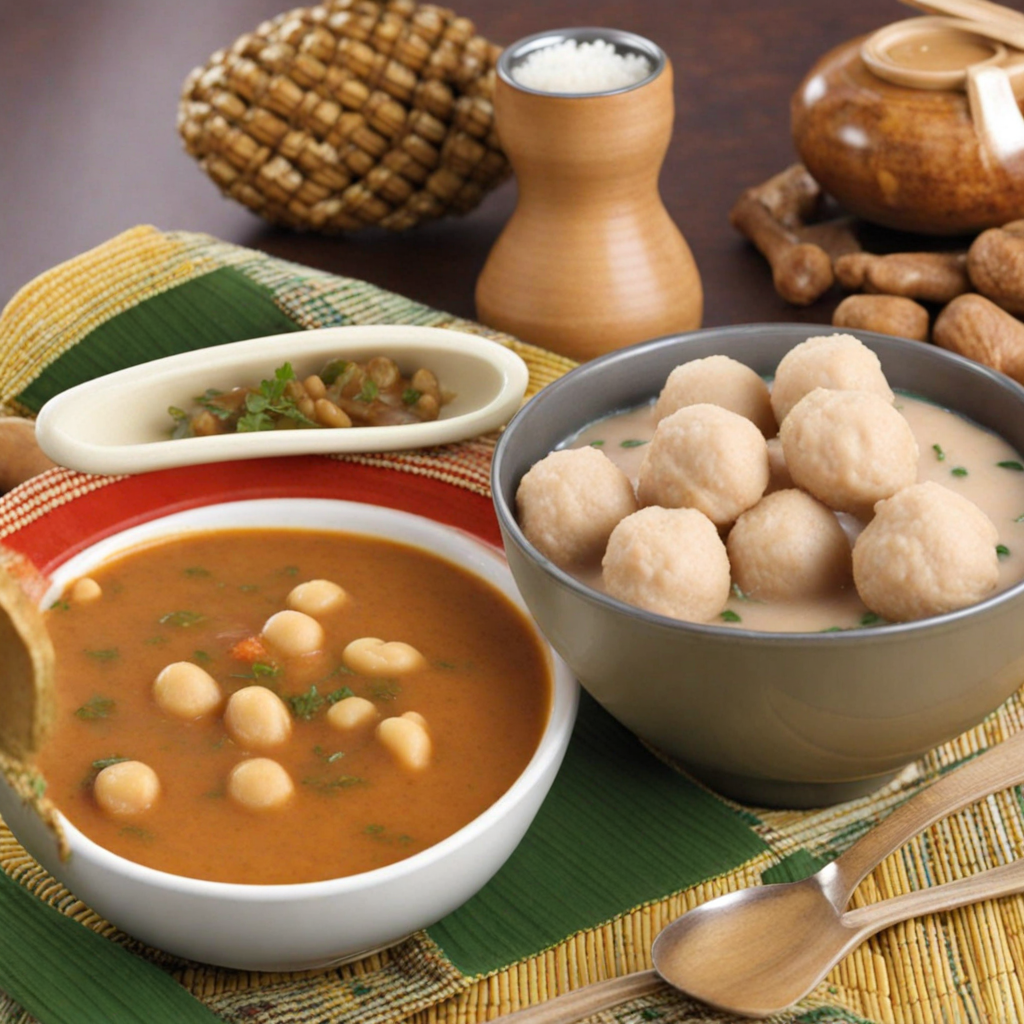Okra Stew
Okra Stew, a beloved dish in Ghana, is a vibrant and hearty meal that showcases the unique flavors of West African cuisine. This stew is primarily made from fresh okra, which is known for its distinctive slimy texture when cooked. The okra is often sliced into rounds and combined with a variety of other ingredients, including tomatoes, onions, and a medley of spices that create a rich and flavorful base. The stew is typically cooked slowly to allow the flavors to meld beautifully, resulting in a dish that is both comforting and invigorating. The addition of proteins such as fish, meat, or even vegetarian options like legumes enhances the stew's heartiness, making it a satisfying meal that can stand on its own. The spices used in Okra Stew, including chili peppers, ginger, and garlic, provide a delightful warmth that complements the natural sweetness of the tomatoes and the subtle earthiness of the okra. This dish is often served with a side of rice or fufu, a starchy side made from cassava or plantains, which helps to balance the rich flavors of the stew. Okra Stew is not just a meal; it is a culinary experience that reflects the culture and traditions of Ghanaian cooking. The dish is often enjoyed during family gatherings and celebrations, bringing people together over shared flavors and stories. Each spoonful offers a taste of the land, with its fresh ingredients and vibrant colors, making Okra Stew an enticing option for anyone looking to explore the depths of Ghanaian cuisine.
How It Became This Dish
The History of Fetri Detsi: A Culinary Jewel of Ghana Fetri Detsi, often referred to as "the dish of the poor," is a traditional Ghanaian meal that has found its way into the hearts and stomachs of many, transcending its humble beginnings. This dish, which translates to "rice and beans" in the Ewe language, is more than just a sustenance; it is a symbol of cultural identity, resilience, and communal spirit within Ghanaian society, particularly among the Ewe people of the Volta Region. #### Origins and Ingredients Fetri Detsi has its roots in the agricultural practices of the Ewe people, who have cultivated rice and beans for centuries. Rice is believed to have been introduced to West Africa through trade routes from Asia and the Middle East. Over time, it adapted to local farming practices, and by the 18th century, it became a staple crop in many regions of Ghana, especially among the Ewe. Beans, particularly black-eyed peas and cowpeas, were also integral to local diets, owing to their nutritional value and ability to thrive in the region's climate. The dish is prepared by cooking rice and beans together, often seasoned with palm oil, onions, and spices, giving it a rich flavor profile that complements its humble ingredients. The simplicity of Fetri Detsi is its strength; it requires minimal ingredients, which made it accessible to all socioeconomic classes, especially in the rural communities where it originated. #### Cultural Significance Fetri Detsi is not merely a dish; it embodies the spirit of communal sharing and unity among the Ewe people. Traditionally, it is often served during communal gatherings, festivities, and even during funerals, representing a connection to both the living and the dead. The act of sharing this dish symbolizes kinship and solidarity, reflecting the communal lifestyle that is central to Ewe culture. In many households, Fetri Detsi is prepared in large quantities, allowing families and friends to gather and enjoy the meal together. This practice fosters social bonds and reinforces the importance of community in Ewe society. The dish has also been embraced by other ethnic groups in Ghana, evolving into a national favorite that reflects the country's diverse culinary landscape. #### Evolution Over Time As Ghana's socio-economic landscape has evolved, so too has the preparation and consumption of Fetri Detsi. In the pre-colonial era, the dish was primarily made with locally sourced ingredients. However, as trade and globalization increased, new flavors and ingredients began to influence traditional recipes. The introduction of spices from various cultures, such as chili peppers and garlic, has enriched the dish, giving it a modern twist while maintaining its core essence. In contemporary Ghana, Fetri Detsi has transcended its status as "the dish of the poor." It is now served in restaurants, at weddings, and during special occasions, showcasing its versatility and the respect it commands as part of Ghanaian culinary heritage. Chefs are experimenting with the dish, incorporating gourmet techniques and presentations that appeal to a broader audience while respecting its traditional roots. Moreover, the dish has seen a resurgence in popularity among the younger generation, who are increasingly interested in their culinary heritage. This revival is partly driven by the global farm-to-table movement, which emphasizes the importance of local ingredients and sustainable practices. Fetri Detsi, with its reliance on locally grown rice and beans, fits perfectly into this narrative. #### Fetri Detsi in Modern Ghana Today, Fetri Detsi is served in various forms. While the traditional preparation remains popular, you can find variations that incorporate different types of beans, such as kidney beans or lentils, and a variety of spices to cater to evolving tastes. Some chefs have taken the dish international, serving it alongside grilled meats or as part of a fusion menu, showcasing the adaptability of this classic meal. Social media has played a significant role in promoting Fetri Detsi among younger generations and the diaspora. Food bloggers and influencers have shared their experiences and recipes, sparking renewed interest in traditional dishes. This digital age has allowed a broader audience to appreciate the history and cultural significance of Fetri Detsi, encouraging conversations about food heritage, identity, and the importance of preserving culinary traditions. #### Conclusion Fetri Detsi is a dish steeped in history, cultural significance, and evolving culinary practices. Its journey from the humble kitchens of the Ewe people to modern restaurants and global menus reflects not only the resilience of Ghanaian culinary traditions but also the power of food as a medium for cultural identity and community. As Ghana continues to embrace its rich culinary heritage, Fetri Detsi stands as a testament to the enduring nature of traditional dishes, celebrating both the past and the future of Ghanaian cuisine. As more people discover and appreciate the flavors and stories behind Fetri Detsi, it is clear that this dish will continue to hold a special place in the hearts of Ghanaians and food lovers around the world.
You may like
Discover local flavors from Ghana


